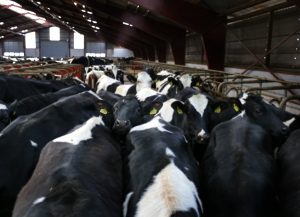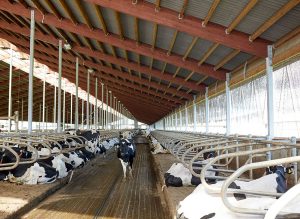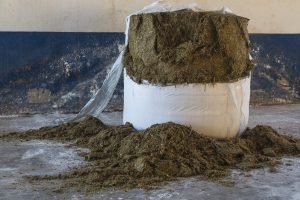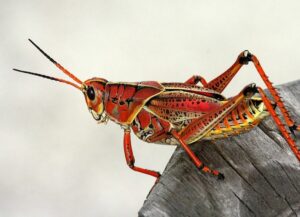Alvaro Garcia
Thermostasis is the process by which animals attempt to keep body temperature constant despite changes in environmental temperatures. Heat stress occurs when cows are incapable of dissipating enough heat to maintain their core body temperature. This increase in body temperature results from the combination of heat from the environment and heat increment produced internally during rumen fermentation and nutrient metabolism. In addition, heat stress increases respiratory frequency (panting) to enhance heat dissipation.
Heat increment is greater at higher feed intakes and milk production, which is why high-producing cows are more sensitive to heat stress than their lower-producing counterparts. While there has been extensive research analyzing these effects in mature cows, comparatively little has been done addressing the potential negative consequences on future productivity, health, and reproduction, of their offspring.
Long-term consequences of suffering heat stress in utero and immediately after birth
Aside for shade, pre-weaned calves are not usually considered a priority when heat abatement strategies are implemented in the farm. The main reasons are that they have a larger surface/mass ratio, and not highly significant heat increment, smaller heat loads, when compared to mature cows. However, heat stress in heifer calves both in utero as well as immediately after birth, can have long-term consequences on their future productivity in the herd.
It has been demonstrated that heat stress on the pregnant cow results in less calf birthweight, less weaning weight and throughout one year of age. This has been attributed to shorter gestation length and decreased fetal growth. In addition, it has also been reported that these calves have reduced passive immune transfer, reduced total plasma protein and hematocrit, and impaired cellular immune functions. As a result, some heifers calves have trouble thriving or even making it to their first lactation. There is also ample research confirming that heat stress between calving and weaning also affects the performance of young calves with the upper critical temperatures suggested as not to exceed 26 to 32 °C.
A recent experiment by Dado-Senn et al. (2020) addressed how reducing pre- and post-calving heat stress affected growth, and health responses compared with heat-stressed calves in the pre- or post-calving periods. Calves born to heat-stressed (HT) or cooled (CL) Holstein cows during late gestation (44 ± 5 days; pre-calving HT or CL) were subjected to heat stress or cooling post-calving for 56 days (post-calving HT or CL). There were four treatments: 1. HT-HT; 2. HT-CL; 3. CL-HT; and 4. CL-CL. Calves received 4 L of colostrum for two days and 10 L/day of milk replacer thereafter together with 3 kg/day of grain starter offered in pen feeding. Cooling post-calving was obtained through 2 fans. Parameters measured to assess the thermoregulatory responses were respiration and heart rates, and rectal, body and skin temperatures. Also measured were feed intakes, average daily gain (ADG) and medicines used with blood samples collected weekly.
Effects of lessening pre-calving and post-calving heat stress
The thermoregulation was lower in post-calving CL calves compared with post-calving HT calves. Calves on HT-HT had the highest respiration rates and rectal temperatures. Calves on HT-CL had the lowest respiration rates, and calves on CL-HT had the lowest heart rates. Pre-calving CL calves weighed more at birth and tended to have greater ADG compared with pre-calving HT calves. In post-calving CL calves milk replacer and starter intake was higher and showed a trend for reduced fevers, infections, and total medications used compared to post-calving HT calves. Pre-calving HT calves had to be fed through esophageal tube more frequently than pre-calving CL calves. When blood samples were evaluated, calves on pre-calving CL calves had higher blood hematocrit and IgG concentrations compared with pre-calving HT calves.
In summary, lessening pre-calving heat stress improved ADG, hematocrit, and immunoglobulin transfer, while post-calving cooling strategies modulated the thermoregulatory response, intake, and health. These results suggest that lessening heat stress both pre- and post-calving improves calf growth and their well-being. This is the first study of its kind and shows the importance of lessening heat stress on both pre-calving and post-calving
Reference
Dado-Senn, B., Acosta, L.V., Rivera, M.T., Field, S.L., Marrero, M.G., Davidson, B.D., … Laporta, J. 2020. Pre-and postnatal heat stress abatement affects dairy calf thermoregulation and performance. Journal of dairy science. 103:4822–4837.
© 2020 Dairy Knowledge Center. All Rights Reserved.











